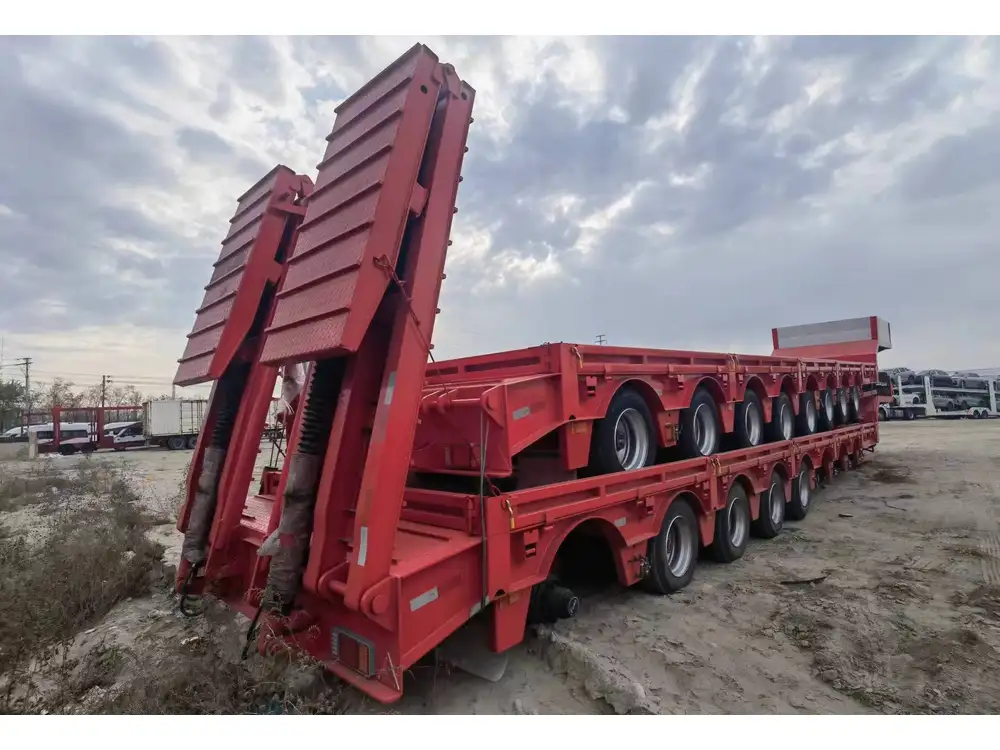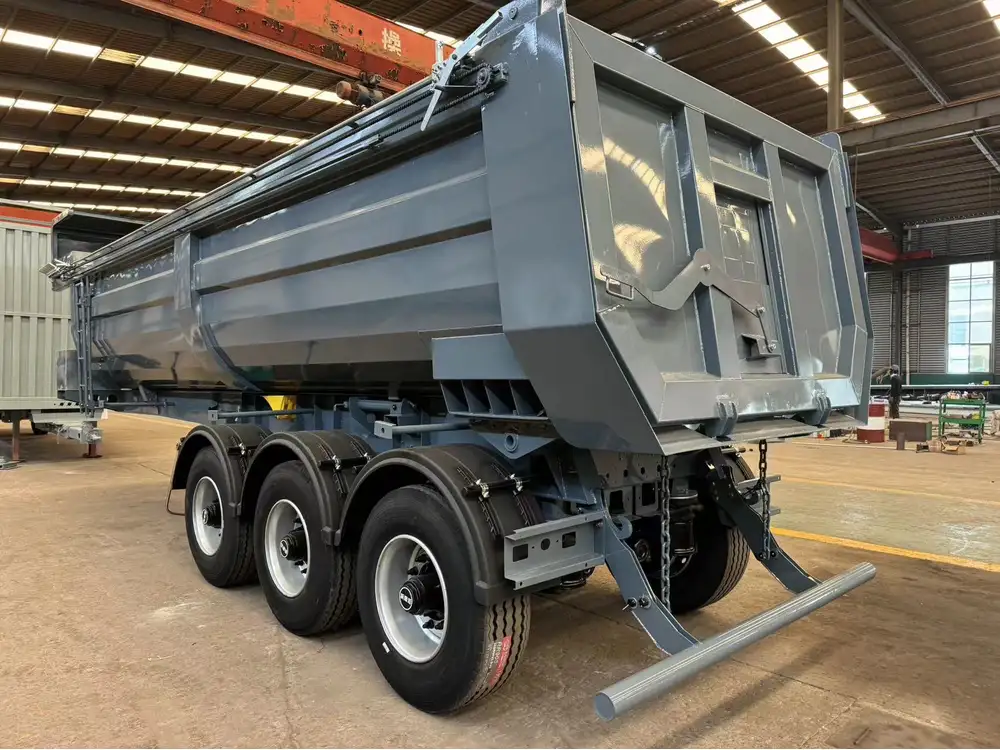Understanding The Basics of Trailer Load Capacity
When delving into the world of semi-trailer trucks, one of the most frequently asked questions is whether a semi-truck equipped with two back tires can effectively transport a full trailer load. This question revolves around several critical factors, including weight distribution, tire specifications, and the dynamics of towing capacity. Let’s unpack these concepts to provide you with a comprehensive understanding.
Key Terminologies and Concepts
Before we dive deeper into the specifics, let’s clarify some crucial terms:
| Term | Definition |
|---|---|
| Semi-Trailer | A trailer designed to be towed by a semi-truck, lacking a front axle and reliant on the truck for support. |
| Load Capacity | The maximum weight that a vehicle or trailer can safely transport. |
| Tire Specifications | Measurements and ratings that indicate the load-carrying capacity of the tires. |
| Weight Distribution | The manner in which weight is spread across the axles of a vehicle or trailer. |

The Role of Tire Configuration in Load Capacity
A semi-truck’s ability to tow a full trailer load largely depends on its tire configuration and the overall design of the vehicle. Here we analyze the implications of having two back tires.
1. Two Back Tires: Structural Implications
Typically, semi-trucks feature dual tires at the rear, a configuration known as a dual-wheel setup. This design enhances stability, increases load capacity, and distributes weight more evenly across the axle. However, a setup with only two back tires—often referred to as a single-wheel configuration—poses several challenges:
Reduced Load Capacity: Single tires do not bear as much weight as dual tires. This means a semi-truck with two back tires will generally have a lower towing capacity compared to a dual-wheel setup.
Stability Concerns: The likelihood of trailer sway increases when towing heavy loads with fewer tires. This instability can affect steering control, especially in adverse weather conditions.
Tire Wear and Heat Buildup: Tires wear out faster when overstressed. A two-back-tire configuration risks overheating, which can lead to blowouts under heavy loads.
2. Weight Distribution: Analyzing Full Trailer Loads
To better understand how two back tires influence towing a full trailer load, it’s crucial to consider how weight is distributed across the semi-truck and trailer.
| Weight Distribution Factors | Analysis |
|---|---|
| Load Center of Gravity | A higher center of gravity can exacerbate sway and instability. It’s vital to position the cargo correctly. |
| Axle Weight Limits | Each axle has a maximum weight limit that must not be exceeded; failing to adhere can cause structural damage. |
| Load Types (Static vs. Dynamic) | Static loads (non-moving) allow for easier handling compared to dynamic loads (moving, shifting). |

Calculating Towing Capacity of a Semi with 2 Back Tires
Let’s break down the specifics involved in determining the towing capacity of a semi-trailer truck with two back tires.
Key Considerations for Towing Capacity Calculation
Manufacturer Specifications: Each semi-truck comes with manufacturer guidelines that outline maximum towing capacities based on its design and tire equipment. When utilizing a truck with a single tire configuration, it is crucial to reference this documentation to avoid exceeding recommended limits.
Gross Vehicle Weight Rating (GVWR): This rating indicates the maximum total weight a vehicle can safely carry, including the truck’s weight and the trailer. The GVWR affects how much weight the semi can tow.
[ \text{Towing Capacity} = \text{GVWR} – \text{Truck’s Curb Weight} ]Payload Considerations: The load distribution on the trailer and how it influences the overall center of gravity affects towing capability. Uneven loading can lead to various problems, including jackknifing or rolling over.
Understanding Load Types
| Load Type | Details |
|---|---|
| Static Load | Does not shift during transit, easier to manage with specified weight distribution. |
| Dynamic Load | May shift as the vehicle moves, requiring more stringent adherence to load safety practices. |

Best Practices for Towing with Semi-Trailers
While the question at hand is whether a semi-trailer truck with two back tires can pull a full trailer load—ultimately, it depends on a myriad of factors. However, several best practices can optimize performance and safety:
Essential Best Practices
Optimize Weight Distribution: Always load the cargo evenly. Position heavy items over the axles and secure them properly to manage shifting.
Regular Maintenance Checks: Ensure that the tires, brakes, and other vital components receive regular inspections. This prevents potential failures while under heavy loads.
Understand Your Trailer’s Limitations: Each trailer has a defined weight capacity and understanding this not only protects your equipment but also reduces the risk of accidents.
Utilize Proper Towing Equipment: Ensure that both the hitch and coupling mechanisms are rated for the load you plan to carry. Incorrect equipment can lead to disastrous failure.
Be Mindful of Road Conditions: Wet, icy, or gravel roads can further complicate towing with a semi. Adjust your speed and braking distance accordingly.
Perform a Practical Capacity Test
If considering a semi with two back tires for towing heavy loads, perform practical tests to gauge performance under controlled conditions. Here’s how you can do it:
Load Assessment: Begin with lighter loads to understand how the semi performs.
Gradual Load Increase: Increase the load incrementally while monitoring stability and truck performance.
On-Road Tests: Conduct tests on different terrains to observe handling and braking responses.

Conclusion: Is It Feasible?
In conclusion, while a semi-trailer truck with two back tires can technically pull a full trailer load, various factors influence its efficiency and safety. The configuration of tires plays a substantial role in overall performance, weight capacity, and stability. Employing best practices in load distribution, regular maintenance, and understanding the nature of your trailer’s capacities can enhance the towing experience significantly.
Always refer to manufacturer specifications and guidelines when considering the full capabilities of your equipment. Ensure safety is prioritized to protect not only your investment but the lives of those on the road.



